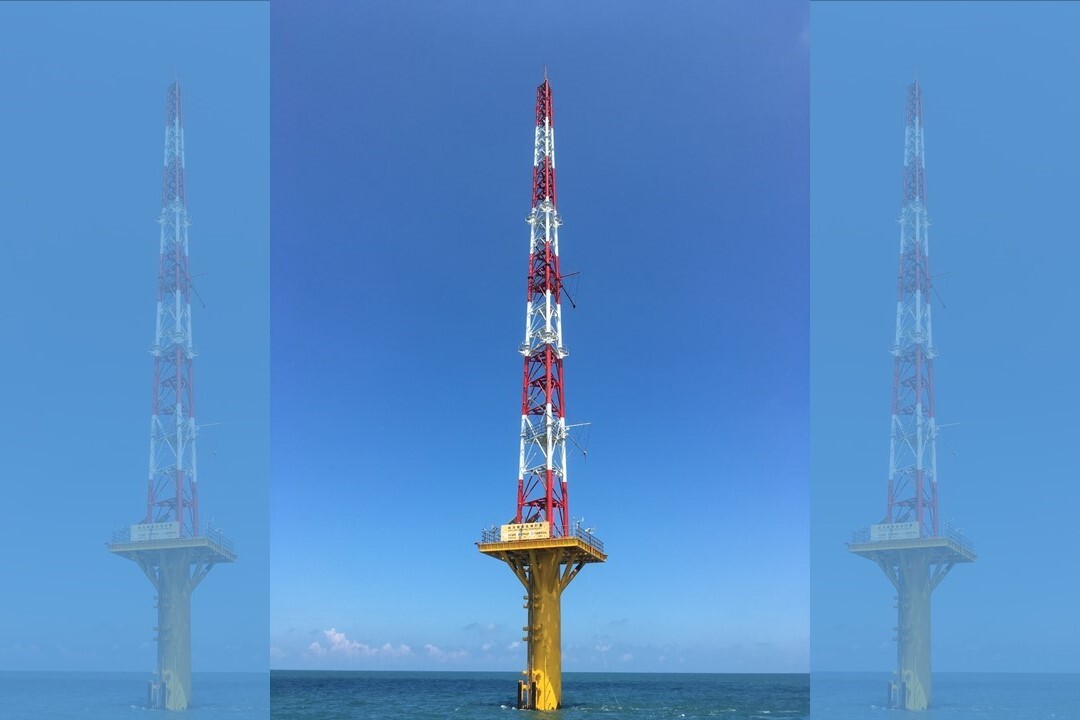PIC/Taiwan Space Agency、TGC
TGC, in collaboration with the Taiwan Space Agency and National Cheng Kung University, is executing an interdisciplinary project aimed at enhancing Taiwan's offshore wind energy forecasting capabilities. This ambitious project combines TGC's extensive experience in offshore wind project development with the university's longstanding research expertise in Taiwan's circumferential wave patterns, tidal currents, coastal meteorological observations, and is supplemented by data from the "TRITON" satellite by the Taiwan Space Agency, scheduled for launch in October this year.

The trilateral collaboration commenced in May 2020 when TGC and National Cheng Kung University's Aerospace Department signed a collaborative agreement. Its purpose was to leverage TGC's Fuhai Met Mast, situated 8 kilometers offshore in Fangyuan Township, Changhua County, for academic research in atmospheric turbulence and wind energy-related studies. One significant component involved the installation of the Global Navigation Satellite System-Reflectometry (GNSS-R) apparatus for satellite navigation reflection on the met mast by the Taiwan Space Agency. This setup facilitated signal collection and analysis. During September to October 2022, the research team obtained valuable met mast-based observations, including GNSS-R signals, instantaneous wind speeds, and wave heights. They performed comparisons between GNSS-R-derived wind speeds and measured wind speeds, confirming the feasibility of this research concept.
"TRITON" satellite
As per available public records, there is currently no method similar to this for ocean surface wind field observation. Typically, aircraft-mounted GNSS-R wind speed meters are used for limited-time observations. The advantage of this approach, which deploys GNSS-R wind speed meters on offshore marine meteorological towers, lies in its ability to conduct all-weather, long-duration observations. It allows for statistical analysis of observations under various meteorological conditions, contributing to precise wind speed inversion.
GNSSR from Space Agency
The realization of this research concept owes itself to industry-academia collaboration. TGC provided the iconic Fuhai Met Mast in Taiwan and years of accumulated wind energy data, while the Taiwan Space Agency furnished a high-precision space-grade GNSS-R wind speed instrument. The project was executed by personnel from National Cheng Kung University. During the mission phase when the TRITON satellite passes over Taiwan's western coast, the collaborative research team is expected to conduct joint observations between the satellite's GNSS-R wind speed instrument and the Fuhai Met Mast's GNSS-R wind speed instrument, as well as wind speed and wave height meters. This invaluable data will be incorporated into the wind speed inversion model's database.
The Fuhai Met Mast was installed in 2015 and stands as Taiwan's first offshore marine meteorological observation tower. To date, TGC and its subsidiary Fuhai Company have continuously collected data related to winds, waves, currents, and more in Changhua waters for eight years. The data collected by the met mast have been assessed and verified by third-party consultants. This academic-industry collaboration vividly underscores the mast's immense value, aptly complementing national satellite missions and playing a pivotal role.
The expertise of the members of this academic-industry research team spans various domains, including offshore wind energy operation and maintenance, satellite remote sensing, satellite navigation and communication, atmospheric turbulence, marine engineering, and ocean-atmosphere interactions. After several years of collaboration, they possess exceptional interdisciplinary project execution capabilities. It is anticipated that they will utilize the TRITON satellite's ocean surface wind speed data to engage in academic research, ultimately enhancing Taiwan's offshore wind farm wind energy forecasting capabilities and further advancing our nation's goals of sustainable energy and environmental preservation.

